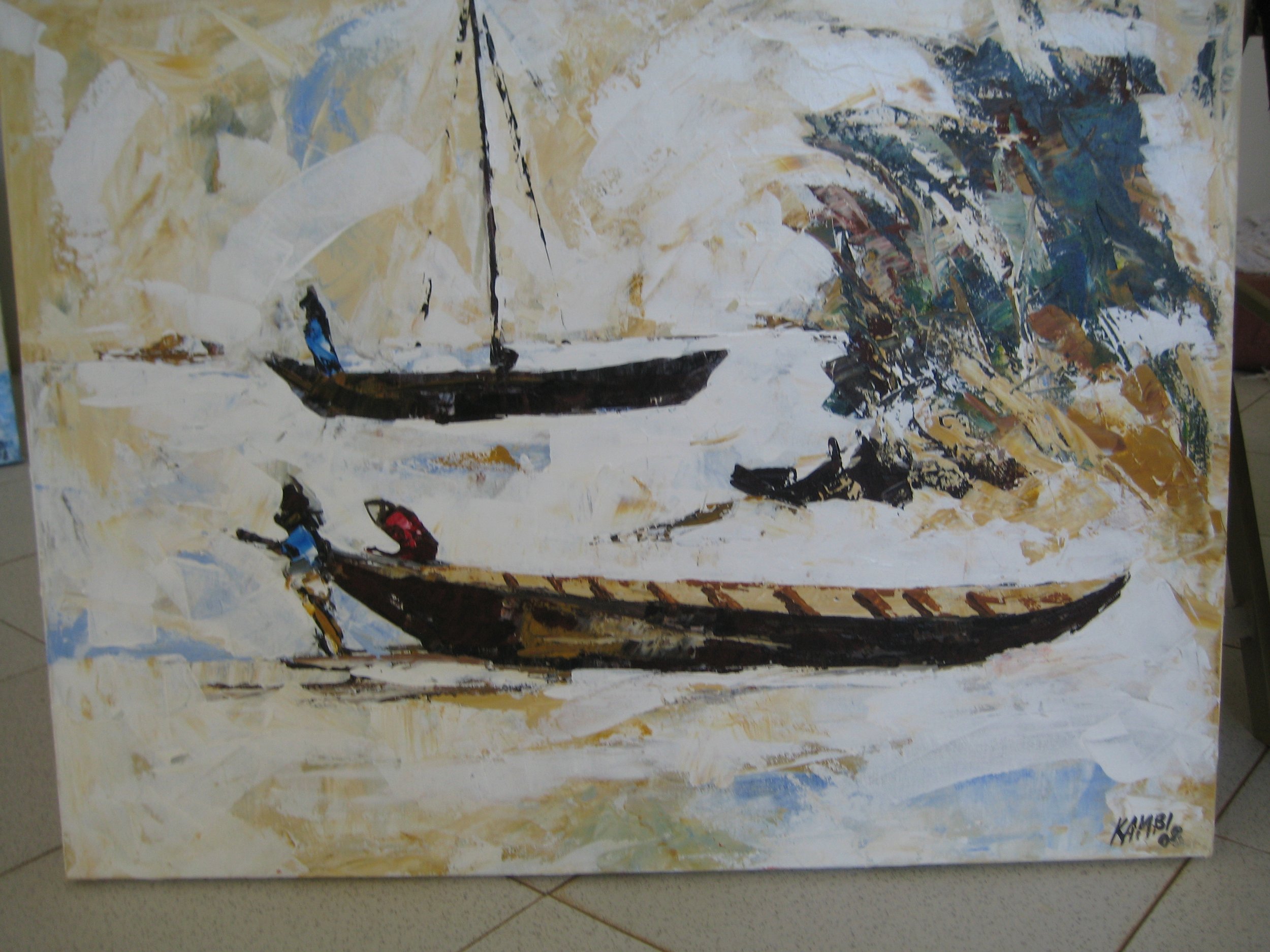Struggling Artists
Most of the artists I met in Tanzania were self-taught, and they spent years honing their skills and trying to sell paintings to support their families. This became exponentially harder when the economic downturn in 2008 forced many galleries to close. A decade later, after the economy had recovered, Covid caused tourism to dry up altogether.
Two painters I befriended when I lived in Dar es Salaam—Salum Kambi and Aggrey Mwasha—had won contests for their drawings in secondary school and went on to become painters. With no formal art school in Tanzania, they’d sought out established painters who agreed to mentor them. Eventually they met gallery owners who recognized their talent and were willing to promote their work.
Kambi and Mwasha told me that the biggest challenges facing artists in Tanzania were a lack of formal training, scarcity of affordable paints, and the limited market for their work. While foreign visitors might be willing to pay hundreds of dollars for their paintings, few locals could afford them; which is why artists mostly depended on tourism.
In 2004, the American and Italian Ambassadors had raised funds to help Tanzanian artists set up a coop in Dar Es Salaam. The Wasanii Art Center provided painters with an ideal location to exhibit their work without having to pay commissions on sales. The Center also published a catalog of artists with contact information so potential buyers could find them. But the coop closed in 2008 after the economy crashed, as did several private galleries.
Art enthusiasts tried to help these artists by displaying their work in private homes. The Norwegian Ambassador arranged an exhibition for Kambi at a venue in Oslo soon after he returned to his country. I did the same and hosted Kambi in Atlanta when we moved back to the U.S. He brought a dozen paintings with him and sold most of them at a small gallery and among my friends. That was over a decade ago, and economic conditions in Tanzania haven’t improved.
I also befriended a sculptor named Ruben who carved “family trees” and sold them at crafts markets in Dar. His ebony totem poles of men and women climbing on each other’s shoulders and backs were powerful images of the circle of life. The Makonde people who carved the distinctive sculptures had originated in Mozambique and migrated to Tanzania in the last century, pushed out by colonial rule and by a liberation war that lasted three decades.
Reuben, who’d learned his craft from his uncle, had been carving for twenty years by the time I met him. He told me that the supply of ebony trees in Mozambique and Tanzania—the prime sources of African Blackwood or ebony—could be depleted by 2030. It took an ebony tree 70 to 100 years to reach a suitable size for harvesting, and the wood was highly coveted for making furniture, musical instruments, and carved figures. But the wood—like Makonde carvings—was being smuggled out of the country by middlemen and sold at far-higher prices than the carvers earned, particularly in commercial markets in Nairobi and Dar.
Reuben brought his sculptures to me when he needed money to pay for his wife’s hospital bill or children’s school fees. The year we left Tanzania, he was unable to work for a couple of months because of a tendon or ligament problem in his carving arm. It was a vicious cycle that was impossible to escape, much like the spiraling figures he carved in his evocative family trees.



